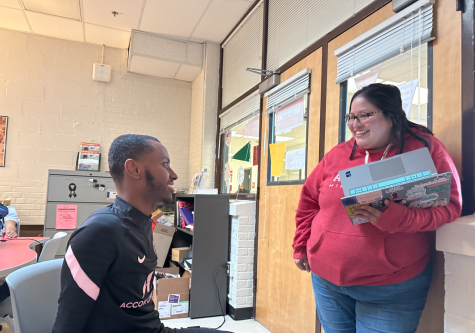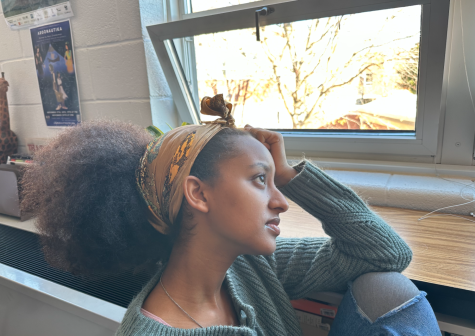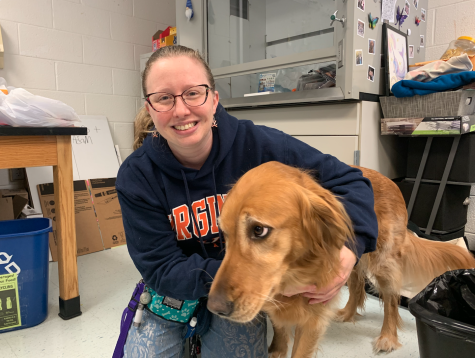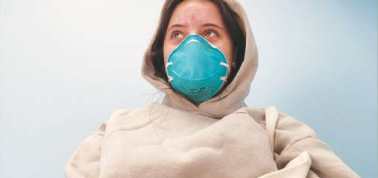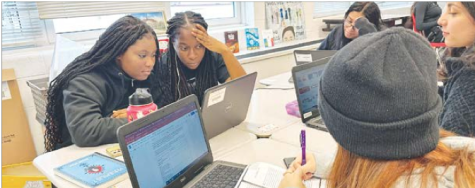P.E. teachers and students navigate virtual learning
Children these days have been struggling with doing gym virtually. In many cases, they do not have large spaces to workout or they are surrounded by their family. Since schools shut down in March, P.E. teachers have been trying to find different ways to keep students engaged and active. This has presented a struggle considering there are no gymnasiums, sports fields, or playgrounds.
Sophomore Ellie Davis says she does not enjoy virtual gym due to the fact that it isn’t necessarily effective. She believes that they don’t really focus on the exercises and there are no similarities between virtual and in-person gym class.
“I don’t really like virtual gym. I get the point of it, but I just don’t think it’s effective. All we do are like twenty-minute exercises and I just feel like we do a lot more in regular school. I also don’t always feel the most comfortable having to turn on my camera to participate,” she explains.
Prior to virtual gym, the child obesity rate in states like California was insanely high. Between the ages of 10-17, there was an obesity rate of 17.1% compared to 15% across the nation. With students being on their screens now, that rate is expected to skyrocket.
All students across the United States are required to take a P.E. class. There used to be a limit of 400 minutes that had to be accomplished by students within 10 days; however, the governor of California, Gavin Newsom, decreased that time by 200 minutes.
Many obstacles that students face are unsafe neighborhoods which prevents them from running outside, living in an apartment building, and living in cities with closed parks. Another issue is that students don’t feel comfortable showing their faces and revealing their homes to their peers, resulting in them keeping their cameras off. This creates a liability issue because many teachers are unsure of whether their students are being honest about completing the activities.
Sophomore Rahiel Berhe says that she does not enjoy the activities assigned during virtual gym, describing them as “weird and useless.”
“Virtual gym is not effective. The workouts we do in class are a little weird, and I don’t understand the point of logging in our exercises,” she complained.
“We should be spending time in class talking more about mental health or other important topics rather than making us repeat topics we’ve already been taught.”
There have been many districts that have terminated P.E. as a required class, making it an elective course.
Regardless of all these obstacles, teachers are attempting to find ways around all of these issues. A technique teachers have found that works best is creating workouts using household items such as water bottles, rolled up socks, and milk cartons.
If the students have the materials, teachers are encouraging them to go on bike rides, hikes, or jogs. Some teachers have even gone the extra mile to provide students with hula hoops, jump- ropes, and stretch bands.
Sophomore Olivia Cruz admits that this is a different dynamic than what she is normally used to, and “enjoys P.E. in person because it’s a more positive atmosphere.”
“Online P.E. is a different dynamic and it has required students to motivate themselves to complete workouts. During class, we usually do both slides and a workout which is nice to have a balance of slides and a workout. i enjoy pe in person because I am able to be around other people and it is a more enjoyable environment” said Cruz
P.E. teacher Felix Quinonez has worked to make gym class much more than curl-ups and jumping jacks. He teaches his students about harmful eating habits, the effects sugar has on our bodies, and mental health.
During every class, Quinonez tells his students to describe their emotions through emojis and plans the classes according to their responses. He believes P.E. is more than just physical health and should cover both mental and emotional health as well.
Adriana Valenzuela, the woman who oversees P.E. in L.A., believes working out is important, but not working out can be particularly harmful to students. She describes her analogy as a “double whammy.”
Sitting all day can make students feel mentally drained, depressed, or sluggish, which will result in them feel unmotivated to work out, says Valenzuela.
Senior research scientist Dr.Susan Babey points out that many students rely on balanced healthy meals that would regularly be provided at school, but are inaccessible at home. Students also perform in many extracurricular sports that they are unable to participate in at home. With students eating unhealthy meals, not performing any sports, and sitting in front of a screen for hours a day, their health can eventually be at serious risk.
Many teachers like Michele Pacheco are worried that with all the stress being placed on students, it can make it harder for them to want to work out. “P.E. helps with emotional regulation, helps you do better in class, and gives you a better outlook”, Pacheco says.
On the other hand, P.E. is also seen as a fun activity to decompress for many students. There are many physical activities performed such as bike riding, dancing, and playing field sports, which are viewed as enjoyable for many children.

Senior Sereene Darwiesh has been on The A-Blast since freshman year. She spends her time reading and hanging out with friends, her hobbies consist of baking...




